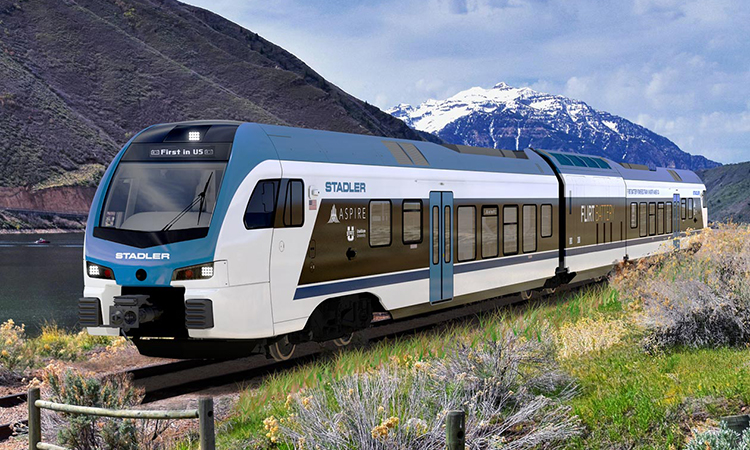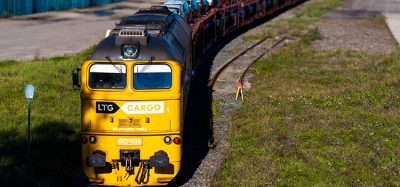Project launched to develop battery-powered passenger train for U.S.
Posted: 17 February 2023 | Elliot Robinson (Editorial Assistant - Global Railway Review) | No comments yet
Stadler, Utah State University and the ASPIRE Engineering Research Center are developing and testing a battery-powered passenger train for North America.


Credit: Stadler
Utah State University (USU), the ASPIRE Engineering Research Center and Stadler have signed a contract to develop and test a battery-powered passenger train. Based on the successful FLIRT Akku concept, Stadler will bring the first multiple-unit train with battery drive to North America.
The aim of the project is to develop, build and test a FLIRT Akku battery-powered two-car multiple unit. Stadler’s FLIRT Akku model is a single-decker, lightweight multiple-unit train for regional transport. Thanks to its battery drive, it allows CO2 emission-free rail transport on non-electrified lines. Stadler has already sold over 110 FLIRT Akku vehicles. In Germany, for example, the battery-powered trains have replaced diesel fleets in Schleswig-Holstein, Rhineland-Palatinate and Mecklenburg-Western Pomerania.
In cooperation with ASPIRE, Stadler is now developing a FLIRT Akku model tailored to the American market. This requires extensive research and development work to adapt the vehicle to the American infrastructure and national regulations. While Stadler is concentrating on the design and production of the train, ASPIRE is working on the development of the trackside charging infrastructure for the vehicle. During subsequent extensive test runs, ASPIRE, USU and Stadler hope to gain important insights for the decarbonisation of American passenger transport through the use of battery-powered trains.
Related content you will enjoy:
Stadler to retrofit Deutsche Bahn vehicles with signalling equipment
Alpha Trains lease eight Stadler FLIRT3 XL to VIAS Rail GmbH for Rheingau Express
“We are honoured to partner with Stadler on this ground-breaking project,” Dr. Regan Zane, Director of the NSF ASPIRE Engineering Research Center, said. “Success will bring design and manufacturing jobs to Utah. It will also chart the path to electrified commuter and light rail systems along the Wasatch Front. The battery-electric train solution will improve air quality and reduce operating costs while supporting shared charging infrastructure with trucks, buses, and cars. We are beyond pleased to have such an incredible opportunity to be working with a world class manufacturer here in the state.”
“With little to no electrified routes in the North American public rail transit system, a battery train is a great zero-emission alternative to diesel-powered vehicles,” Martin Ritter, CEO of Stadler US, said. “After a contract for a hydrogen-powered FLIRT for California, we are now excited to bring our battery solution to the United States. In ASPIRE we have found an excellent partner to develop the most efficient and fully integrated system for environmentally friendly mobility. We are proud to be able to work with local talent to design and build this technology here in Utah.”
The record-beating FLIRT Akku
The FLIRT Akku is the battery-operated version of Stadler’s FLIRT model. The vehicle has an operating range of around 100 kilometres. Having covered 224 kilometres in battery-only mode, the FLIRT Akku holds the world record for the longest journey travelled by a regional train in battery-only mode without additional charging. As well as the purely electric and battery-electric versions, Stadler also makes a FLIRT model that runs on hydrogen. Stadler is currently developing the first hydrogen-powered FLIRT for the San Bernardino County Transportation Authority (SBCTA).
Related topics
Electric/Hybrid Rolling Stock, Regulation & Legislation, Rolling Stock Orders/Developments, Sustainability/Decarbonisation
Related organisations
ASPIRE Engineering Research Center, Stadler, Utah State University






